4 Benefits of Objective Testing for Your Training & Programming
February 14, 2023
Since I started my Physical Therapy career as a student in 2009, the game has really changed a lot. From the accessibility of information to the progress of technologies that make businesses work, I would say nothing has become more accessible than access to testing. In 2009, if my client wanted to do some sport testing after an ACL reconstruction, they would probably have 1-2 facility options in the local area, and those facilities would have equipment that cost probably $200,000-$300,000. Beyond that, the environment usually wasn't much like the environment in which they actually train or perform.

The old way
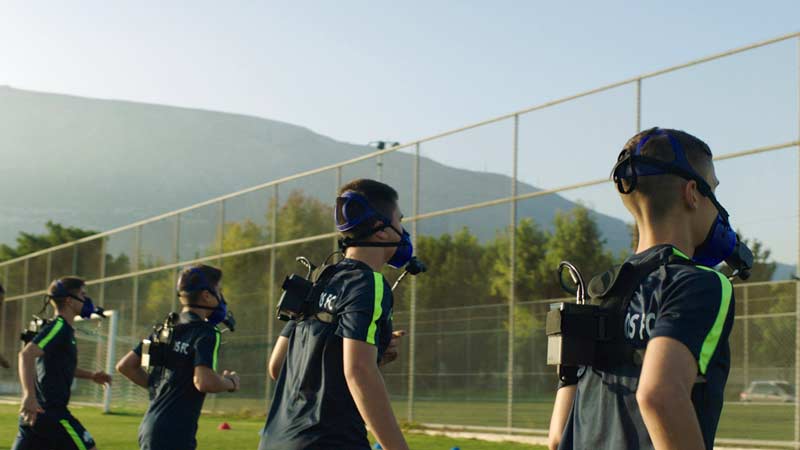
The new way
Today, this type of technology has incredible portability and (relative) affordability. It is immensely valuable to bring ForceDecks to a track, gym, or studio to put the test directly into their context and environment. Instead of clunky laboratory tests, we can now test athletes Resting Metabolic rates ANYWHERE or take the VO2 testing mask to their field of play to see exactly what the output is like when they are doing their thing, in real life.
With this improved accessibility, it's made testing worth it for everyone, rather than just for the elite athletes looking to gain their last 1%. So let's talk about some of the reasons why we test at MOTIVNY. Some of them may be obvious, and some might be reasons that testing applies to your life that you didn't realize existed.
1. Measure progress (or not progress, too)
One of my personal mantras in therapy is to always be skeptical. I know some of you will laugh because you know I'm totally that way...but hear me out on testing. Sometimes we use our clinical skills to develop a plan, and we want to see that plan move forward. Especially with longer-termed rehab protocols, or complicated cases, it can be tough to feel progress sometimes. Objectively testing some points gives you the certainty you need that your plan is working.
These information points have benefited me in communicating with clients who have a less expert eye for exercise. Clients respond quickly to increasing bar graphs or strength and plyometric numbers and take more convincing of feel-oriented improvements like the ease of movement, coordination, passive tension or flexibility, and other potentially cloudy aspects of moving.
When someone isn't making progress, that can be okay too! Sometimes what we need as professionals is to see these results and take a new approach if we haven't been getting what we're looking for. Without objective testing, that can be a funky conversation to have with the client. When we communicate with clients on what we're testing and why, and how it correlates to the plan it turns out they are more receptive when the plans need to change.
2. Show our clients how MUCH they are capable of
One of the greatest benefits of working with a coach or therapist is that they have the expertise to understand what the client is capable of. A lot of recoveries are halted by psychology and self-defeating ideology. Stop me if you've heard this before...
"I can't run that race because the course is really tough and I'm pretty slow, and my knee hurts when I run longer than X miles."
Well, honestly most of the time people don't realize that they may very well have the capacity to do the thing they want already. Sometimes it's really just the plan that is keeping you from succeeding, and not the actual doing of the activities. Clients who run all of their training runs too fast or without adequate recovery times will experience exactly what this example describes...and if they had a better plan and structure they wouldn't see it that way at all.
In the case of the chart below, the athlete has been dealing with long-term pain and psychologically expects one side to perform poorly, but when tested in single-leg jumping, they were actually identical in averages.
When we test, we can show clients how much output they need to reach their goals, and change the conversation towards structure instead of fear of inadequacy.
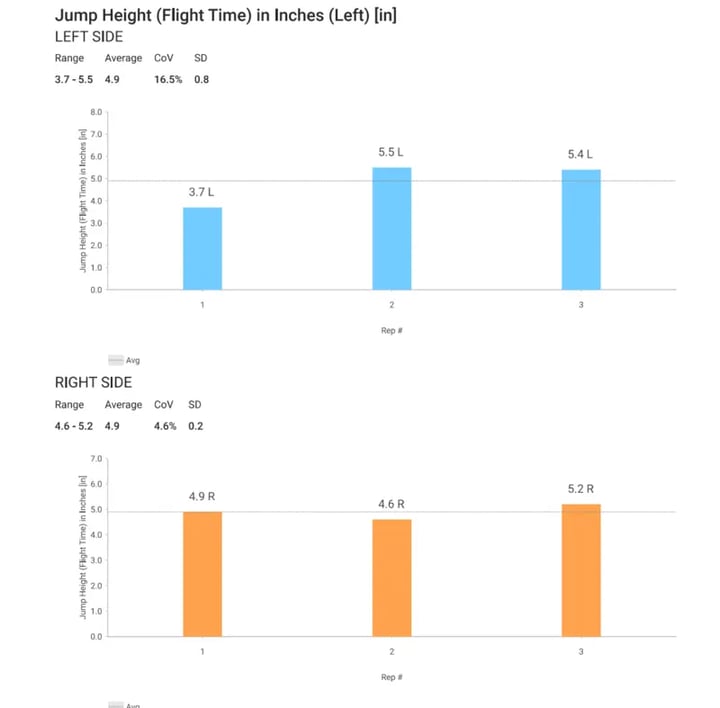
An example of client's single leg hop testing symmetry.
3. Gain experience in a performance environment or sport-like context
Coming off of injuries is tough, physically and mentally. How many opportunities do you get to practice or simulate the competitive environment? Most rehab settings, I would argue, fail at this and never raise the intensity high enough. Not only on a strength and exercise selection level but on a mentality and pressure level as well.
Something I love seeing is a client's nerves start to peak when they're about to do testing because this is an outstanding opportunity to prepare them for when they get back in action. Tense and nervous athletes perform poorly; smooth and relaxed athletes perform well. You'll need to give yourself exposure to the pressure to start to be able to get more comfortable.
4. Talk to our healthcare partners (Surgeons, coaches, therapists)
You'll hear more about our VALD ForceDecks and how we are taking advantage of them in an upcoming blog from MOTIVNY Therapist, James Chung, but I'll touch base on a key point here. The conversation between healthcare professionals is lacking, and as education gets more and more specialized, we find that language differs between providers. Using our testing data, we're showing our Doctors and other coaches' results in a digestible way. While a surgeon may not be thinking on a daily basis about joint capsule stretches, range of motion drills, or agility programs, they will respond to improvements in Limb Symmetry Index (% of the force observed Left vs. Right), Jump height progression, or Isometric Strength output. For you as a client, that means that they can be more informed on your between check-up progress and have a more informed conversation when you do visit.
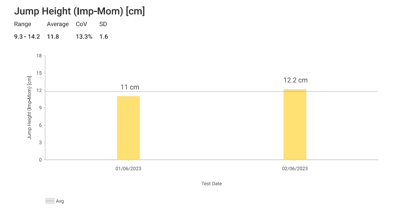
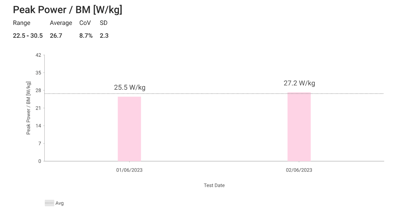
Progress indicators sent to a Physician on behalf of a client post-ACL reconstruction.
Look for our upcoming blog posts on specific testing equipment, why you would use that equipment, and what we're looking for, down to the nitty-gritty detail when we do it.
- PNoE Metabolic testing
- VALD ForceDecks Jump Testing
- VALD ForceDecks Isometric testing
- VALD Dynamo Isometric testing
- Return to sport testing
- Asymmetry/injury recovery analysis
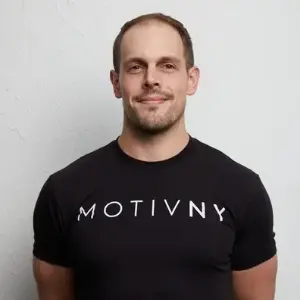
LUKE GREENBERG
Manual Medicine, Kettlebells and Golf Training, Team Dad